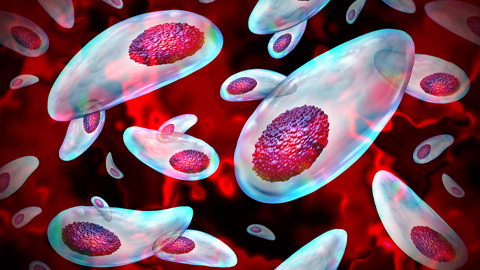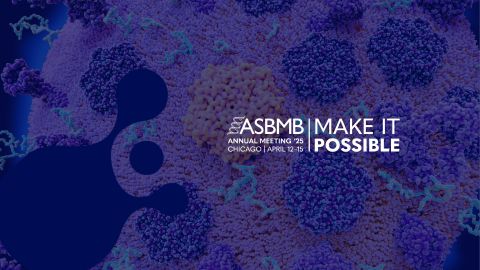MCP: A royal legacy
Katharina Paschinger’s father, a conservation chemist in Vienna, was a devoted beekeeper. Paschinger remembers fondly that he would bring royal jelly, an important food for bee larvae, as a gift on visits to her maternal grandmother.
“He would feed it to my grandma and tell her it was for long life and beauty,” Paschinger said. “And actually, she lived to be 98.”
 These two queen cells were opened to show queen larvae of the Western honey bee floating in royal jelly.WAUGSBERG/WIKIMEDIA COMMONS
These two queen cells were opened to show queen larvae of the Western honey bee floating in royal jelly.WAUGSBERG/WIKIMEDIA COMMONS
Royal jelly is widely believed to have health benefits, although the medical evidence is scarce (and doctors caution that some people have severe allergic reactions). One thing the substance certainly does is promote caste development in honeybees, causing genetically identical larvae to develop into very different adults. All bee larvae eat royal jelly secreted by worker bees for the first few days of life, but those selected to be queens continue to eat it until they pupate and beyond, whereas those that will become workers switch to honey and pollen. Biologists believe molecular signals in royal jelly drive larval bees to develop into queens, but the details of that signaling — including what molecule is most important and how it is recognized — are not yet clear.
Such questions brought Katharina Paschinger, a chemist, to revisit royal jelly this year in research published in the journal Molecular & Cellular Proteomics. Paschinger and colleagues in Iain Wilson’s lab at the University of Natural Resources and Life Sciences in Vienna focus on glycoproteins, proteins to which a chain of sugar molecules is attached. These sugar chains, called glycans, can affect proteins’ binding and signaling activities dramatically.
Previous studies of royal jelly glycoproteins mostly had found classes of glycans known as oligomannosidic and simple hybrids. As these contain no special recognition elements, they could not explain the unique effect of royal jelly on larval fate. But Paschinger, her colleagues and other scientists recently began to find more complex glycan structures in several insect species, such as mosquitoes and moths. Their data, Paschinger said, challenged “a really long-held belief that insects only synthesize oligomannosidic glycans. You see these statements everywhere. It’s a nightmare to read such simplifications.”
The diversity in other insects’ glycans was a reason to suspect that royal jelly glycoproteins also had hidden depth. Royal jelly, available in bulk at health food stores, was a good candidate for a combined glycomic and glycoproteomic analysis, first author Alba Hykollari said.
“If you have a sample and you want to start with glycomics, the first question is how much you have and how pure is it,” Hykollari said. “We were quite lucky; we got a lot of royal jelly, and it was very pure.”
To determine the structure of the glycans in royal jelly, Hykollari used enzymes to isolate the glycans from proteins and added chemical tags. She separated the tagged glycans using liquid chromatography and analyzed them using a mass spectrometer.
Paschinger analyzed the data to draw conclusions about the glycan structures. First, she compared fragmentation patterns to precursor molecules, making inferences about the glycans’ structures from how they broke apart. Then she suggested specific chemical or enzymatic treatments to test those hypotheses.
Because glycans are modular chains, like Legos, breaking off one unit at a time can give a good idea of how the whole fits together. For example, phosphoethanolamine, a subunit the team observed in royal jelly, blocks digestion by some enzymes, but it can be removed using hydrofluoric acid. If glycan fragments of a certain mass appeared after treatment with hydrofluoric acid, it was a clue that phosphoethanolamine was present.
“I would say that the N-glycome of royal jelly was definitely underestimated,” Hykollari said.
Of the approximately 100 glycan structures the team defined, many had not been observed before in bees. Their laboratory’s exclusive focus on glycan biochemistry and their extremely sensitive mass spectrometer helped the researchers determine the identity of scarce glycans, Hykollari said. “We have worked (on glycans) for many years, so I would say our workflow is optimized.”
Knowing these structures could help future scientists understand the activity of glycosylated proteins in royal jelly — either how they designate larval bees as future queens or how they trip allergic alarms in the human immune system. For example, said Paschinger, a researcher could synthesize a glycan from royal jelly to see how it interacts with signaling proteins in the larva. Their own plans moving forward are to tackle the glycome of another species.
“Our driving force is understanding glycoevolution,” Paschinger said. “But very often we’re also driven by the element of challenge.”
Paschinger said the research team dedicated their manuscript to her father, the chemist-beekeeper. “I am sure he would have been very happy to see something scientific come out of his beekeeping hobby.”
Enjoy reading ASBMB Today?
Become a member to receive the print edition four times a year and the digital edition monthly.
Learn moreGet the latest from ASBMB Today
Enter your email address, and we’ll send you a weekly email with recent articles, interviews and more.
Latest in Science
Science highlights or most popular articles

Using DNA barcodes to capture local biodiversity
Undergraduate at the University of California, Santa Barbara, leads citizen science initiative to engage the public in DNA barcoding to catalog local biodiversity, fostering community involvement in science.

Targeting Toxoplasma parasites and their protein accomplices
Researchers identify that a Toxoplasma gondii enzyme drives parasite's survival. Read more about this recent study from the Journal of Lipid Research.

Scavenger protein receptor aids the transport of lipoproteins
Scientists elucidated how two major splice variants of scavenger receptors affect cellular localization in endothelial cells. Read more about this recent study from the Journal of Lipid Research.

Fat cells are a culprit in osteoporosis
Scientists reveal that lipid transfer from bone marrow adipocytes to osteoblasts impairs bone formation by downregulating osteogenic proteins and inducing ferroptosis. Read more about this recent study from the Journal of Lipid Research.

Unraveling oncogenesis: What makes cancer tick?
Learn about the ASBMB 2025 symposium on oncogenic hubs: chromatin regulatory and transcriptional complexes in cancer.

Exploring lipid metabolism: A journey through time and innovation
Recent lipid metabolism research has unveiled critical insights into lipid–protein interactions, offering potential therapeutic targets for metabolic and neurodegenerative diseases. Check out the latest in lipid science at the ASBMB annual meeting.

